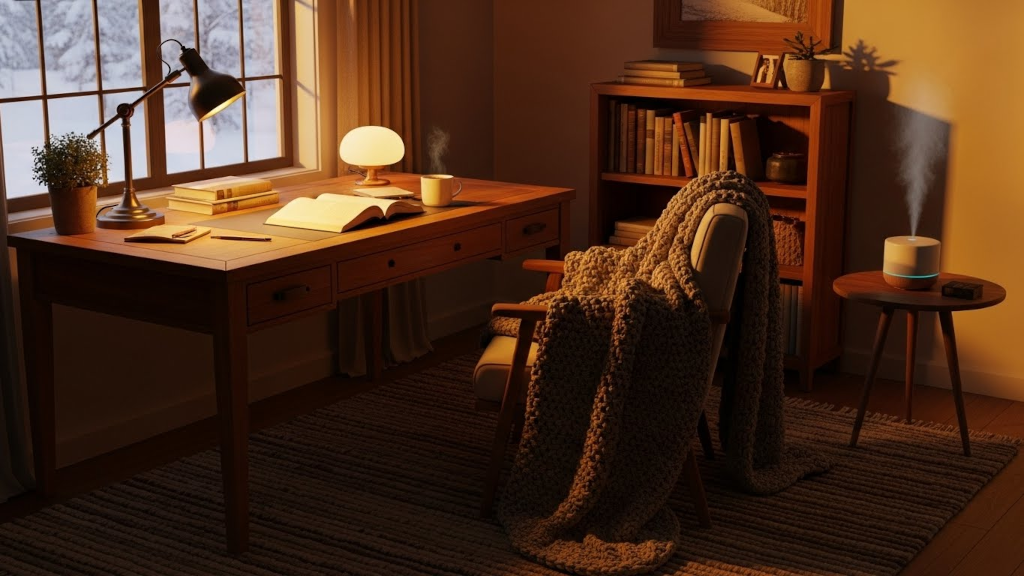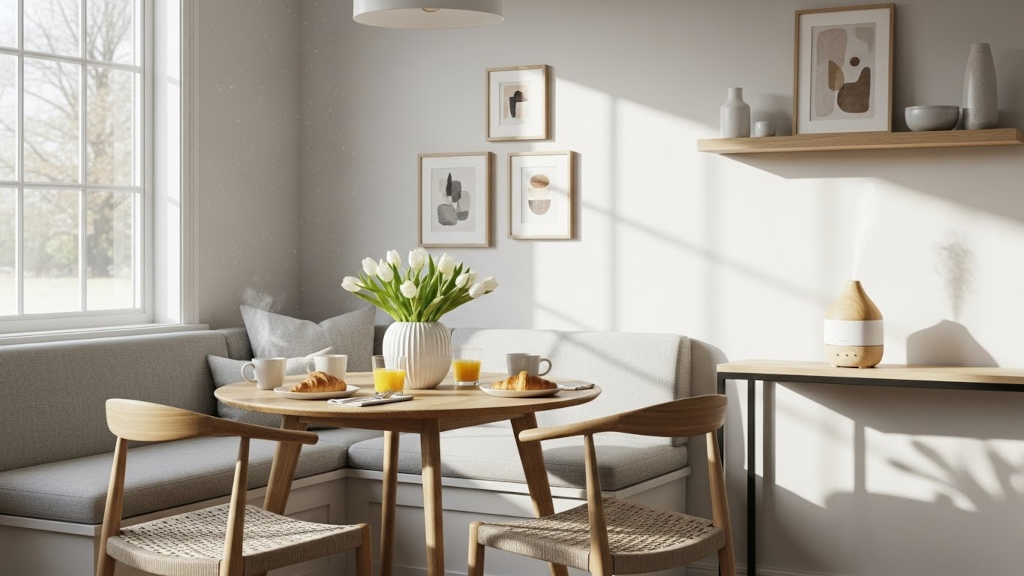When people think about home fragrance, they often focus on scent selection and diffuser placement. What is less often considered is how the actual shape and architecture of a room can influence the way fragrance moves and lingers. Understanding how angles, ceiling height, and square footage affect diffusion can elevate the experience, turning scenting into an intentional design element rather than an afterthought.
The Role of Room Angles
The angles within a room can determine how fragrance flows and settles. Spaces with clean, uninterrupted lines tend to allow scent molecules to travel more freely, creating an even aroma throughout. In contrast, rooms with alcoves, built-in shelving, or partial walls may create scent pockets where fragrance lingers more heavily.
If your home has angled ceilings, such as in attic rooms or converted lofts, the fragrance may concentrate in certain areas. Positioning your cold air diffuser near the widest or most open portion of the room can help fragrance circulate before settling into these spaces. By experimenting with placement, you can avoid overly strong areas while ensuring the entire space benefits from the aroma.
Ceiling Height and Scent Movement
Ceiling height plays a major role in how a fragrance disperses. High ceilings create a more expansive vertical space, which can dilute the perceived strength of the scent. In these rooms, you may need a slightly higher output setting to ensure the aroma is noticeable at ground level, where people spend most of their time.
Lower ceilings, on the other hand, naturally contain the fragrance closer to where it is experienced. Here, a lighter diffusion cycle may be all that is required to create an inviting atmosphere. In especially tall spaces like great rooms or open lofts, consider placing the diffuser at an elevated level, such as a shelf or cabinet top. This helps the fragrance begin dispersing from a higher point, allowing it to move outward and downward evenly.
Square Footage and Output Levels
Square footage is one of the most obvious factors affecting fragrance. Larger rooms simply require more scent to fill them. However, the goal is not to overwhelm the space but to create a balanced atmosphere. For expansive open-plan layouts, two diffusers set at a lower intensity can create a smoother, more consistent fragrance experience than one diffuser set at full strength.
Smaller spaces need a more delicate approach. Bathrooms, reading nooks, or home offices can become overly saturated with scent if the diffuser is set too high. Instead, choose shorter diffusion cycles and subtle fragrance profiles that maintain freshness without becoming dominant.

How Airflow Influences the Experience
Architecture often dictates airflow. Large windows, open staircases, and doorways between rooms can all impact how fragrance moves. A gentle, consistent air current will help scent travel, while strong cross-breezes may push the fragrance out of the intended space.
For open-concept homes, placing the diffuser in a central but sheltered position can help keep the fragrance anchored. In more compartmentalized layouts, you may want to scent each room individually, especially if doors are often closed.
Scenting Multi-Level Homes
In multi-level homes, fragrance diffusion becomes more complex. Warm air naturally rises, so scents placed on lower levels may travel upward. This can be beneficial if you want a consistent scent profile throughout the house, but it may require adjusting diffuser settings to avoid overpowering the upper floors.
For targeted scenting, keep each level equipped with its diffuser, using complementary fragrance profiles. This allows for tailored experiences, such as an energizing citrus blend in the kitchen and a grounding floral in the upstairs bedrooms.
Choosing Fragrance Profiles for Architectural Features
Architecture can inspire fragrance choice. Large, open spaces often work well with airy, ozonic blends or light botanicals that feel expansive. Smaller, enclosed rooms can handle warmer, richer profiles that wrap the space in comfort. Tall windows and bright natural light pair beautifully with fresh herbal or citrus notes, while rooms with dark wood and intimate lighting suit deep florals, resins, and soft woods.
Aligning fragrance style with architectural feel ensures the scent becomes part of the room’s identity, supporting its design rather than competing with it.
Practical Tips for Optimal Scenting
-
Map Your Space: Take note of airflow patterns, furniture placement, and natural gathering points. This helps determine the best diffuser location.
-
Adjust Seasonally: Windows and doors tend to stay open in warmer months, which may require more frequent or slightly stronger diffusion. Cooler months often trap fragrance indoors, so lighter settings can be effective.
-
Layer Strategically: In homes with varied architecture, layer scents that share similar base notes to maintain cohesion from room to room.
-
Use Height to Your Advantage: Place diffusers at different levels in large or tall spaces to achieve balanced distribution.
Bringing Architecture and Aroma Together
When fragrance is thoughtfully integrated with a room’s architecture, the result feels natural and harmonious. The space carries its personality, shaped not only by design and decor but by the scent that fills it. The height of the ceilings, the way the walls meet, and the flow between rooms all influence how fragrance behaves.
By learning to read your home’s architecture in this way, you can fine-tune your scenting approach. This transforms fragrance from a background detail into a subtle design tool, one that enhances how a space feels and how people experience it.
The result is a home where scent and structure work in unison, creating an environment that is as pleasing to the senses as it is to the eye.








